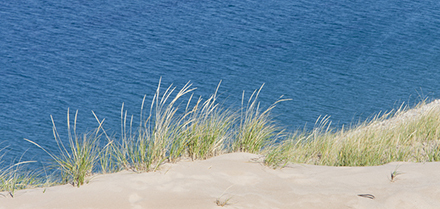This week we recognize National Invasive Species Awareness Week and with Lake Michigan in the Shedd Aquarium's backyard, protecting the Great Lakes is an issue that literally is near to our heart -- so what better time to get involved?
Although invasive species may seem like a localized issue limited to one city, state or province, Asian carp and other non-native animals pose a significant threat to habitats, wildlife and livelihoods throughout the Great Lakes basin. This basin is home to 42 million people living in 140 communities -- all of whom can play a role in helping to prevent the spread of invasive species.
Recently Asian carp has surfaced as invasive species "public enemy number one." They pose a significant threat because they consume large quantities of plankton, algae and other microscopic aquatic plants. Plankton functions as the basis of the entire Great Lakes food web, so Asian carp have the potential to out-compete native wildlife that relies on the same food source. This invasive species also reproduces quickly and in large numbers, so their presence in the lakes could devastate Great Lakes plankton populations and wreak havoc on commercial and recreational fisheries -- a multi-billion dollar industry.
Asian carp, however, aren't the first invasive species to threaten the lakes. More than 180 invasive species, including quagga and zebra mussels, have already established populations in the Great Lakes, and their effects are felt by wildlife and people alike. Once established, invasive species can be nearly impossible to eradicate, so prevention is truly the best option we have. For those invasives that do establish themselves, management is the next step.
Fortunately, a community of smart, dedicated people -- from scientists to private citizens, to government officials and non-profit organizations -- are working hard to deal with the invasive species already in the lakes and to keep new ones from entering.
For instance, the U.S. Environmental Protection Agency's (EPA) Great Lakes Advisory Board has recommended the Great Lakes Restoration Initiative continues to focus its efforts and monies on the prevention of new aquatic invasive species, especially Asian carp.
This recommendation, among others, is part of the FY2015-2019 Great Lakes Restoration Initiative Action Plan that was sent to the U.S. EPA administrator. It provides guidance to various federal agencies as they build upon past restoration and protection successes and helps ensure a vibrant future of the Great Lakes ecosystems.
Shedd also is committed to making investments to protect the lakes, and invasive species is one of four key areas for concern outlined in our Great Lakes program. To better understand these non-native populations, our conservation experts are in the field studying the biology of invasive species such as weatherfish and round goby. Their research clarifies the risks to local waters and helps inform management recommendations. Beyond just conducting this research, Shedd also is committed to using this information to educate the public about the threats posed by invasive species and the potential solutions for preventing their spread.
Our At Home on the Great Lakes Gallery is just one example of Shedd's many conservation and education resources. This immersive exhibit features more than 60 Great Lakes species that connect visitors to the living world through hands-on learning and up-close encounters with native and invasive animals. Guests will have the rare opportunity to see just how large - and dangerous - Asian carp can be, and they'll also find tips on how Great Lakes communities can help keep invasive species out of local waters.
As an active member of the Great Lakes conservation community, we're proud of our ability to translate issues to the public and hopefully inspire them to make a difference. We urge you to join us in ensuring a vibrant, healthy future for our Great Lakes. Simple actions can make a big difference and help ensure the Great Lakes are preserved for future generations. So what can you do to support national Invasive Specie Awareness Week? Here are five was that you can help keep the lakes great:
1. Share Shedd Aquarium's "High Stakes of the Great Lakes" videos on your own social channels.
2. Donate unwanted aquatic pets to a hobby club or school instead of releasing them into waterways where they might become invasive.
3. Don't dispose of unwanted or leftover bait in the water, as bait buckets can harbor invasive species; instead, give them to others to use or dispose of them on land.
4. Check out Shedd Aquarium's first-of-its-kind Asian carp curriculum, a resource designed for teachers and students to explore the Great Lakes and learn about invasive species.
5. Clean hiking boots, boats and trailers, off-road vehicles and other gear to stop invasive species from being transported to a new location.
